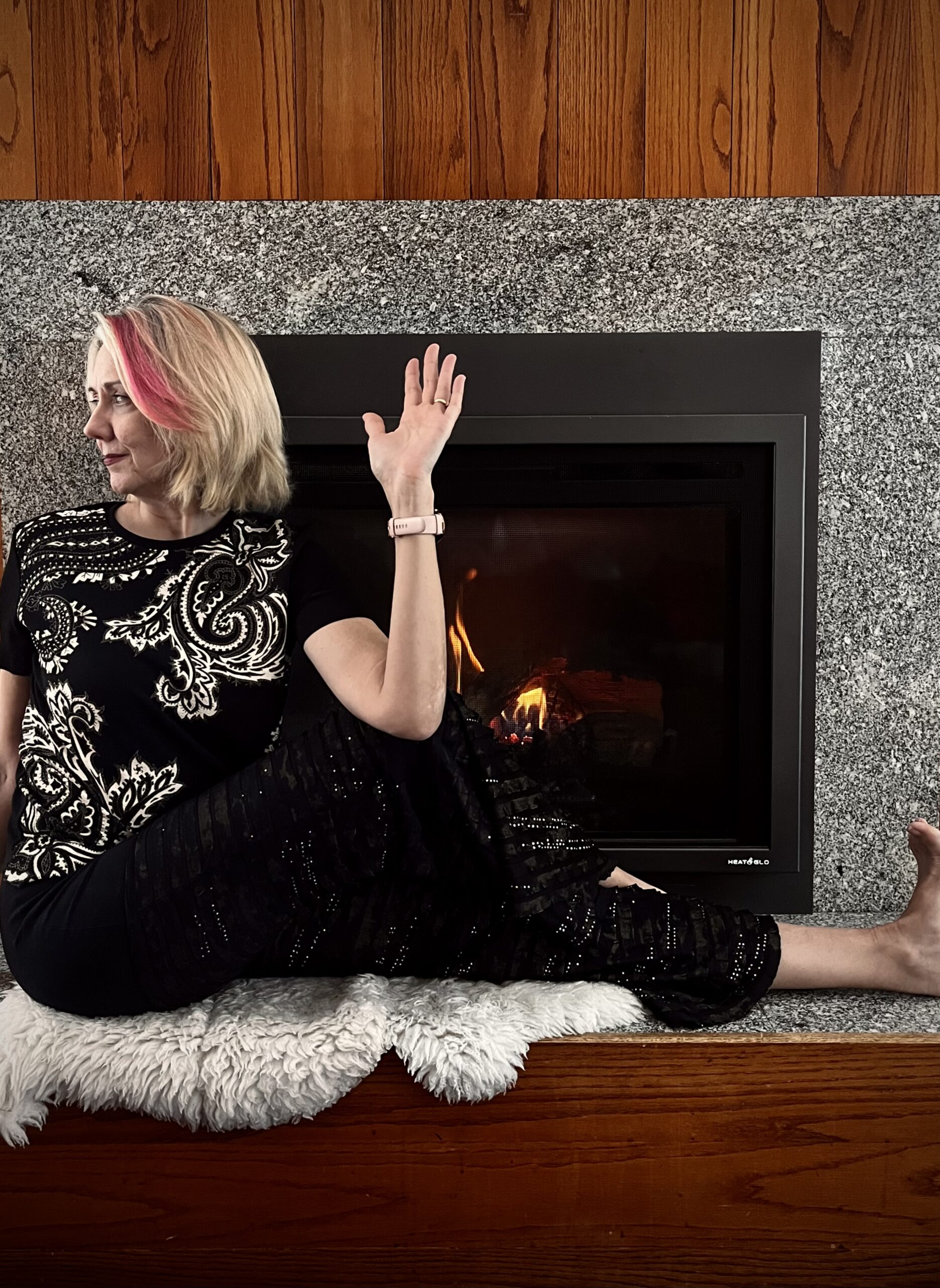Rarely a week goes by when I don’t get the question, “Do you teach Vinyasa Flow?” Given the level of confusion and conflation of terms around yoga, I tend to ask, “What do you mean by that?” The response I get is usually a description of a health-club, group fitness experience, with faster-moving sequences of postures to music. Now, this is where it gets tricky for me–sure I could give a simple answer, but I can’t quite help myself. I usually ask, “Why do you think you want to do Vinyasa Flow?” This often leads to an awkward silence. You see, Vinyasa Flow is The Trend and has become so ubiquitous, that people don’t always stop and think, “Hey, is Vinyasa Flow the right style for me?” Or, as your Mom might say, “Just because everyone else is jumping back into chaturanga, does it mean you should?”
Let’s consider the origins of Vinyasa Flow. The classical school of lineage (to India) and major influence for Vinyasa Flow hearkens back to a guru named Sri K. Pattabhi Jois (1915-2009) and his “Ashtanga” yoga. He came up through the ranks of a master named T. Krishnamacharya in the city of Mysore, India. Krishnamacharya is also the guru of B.K.S. Iyengar (1918-2014), another prominent figure credited with proliferating yoga successfully into the West. FYI, Iyengar was also Krishnamacharya’s brother-in-law, taken in as a disciple upon being orphaned. So, how is it the styles of these two men — Jois and Iyengar — are so different, when they studied under the same teacher? Where as the Ashtanga yoga of Jois features set routines of poses choreographed together with movements familiar to Vinyasa Flow yogis, Iyengar’s method has longer-holds, giving time for intensive fine-tuning of each pose. There are not much in the way of flashy transitions. Iyengar favored normal nose-breathing while Jois favored use of ujjayi breath (sometimes called “ocean sounding” breath ) in the poses.
It’s generally agreed that both Jois with his Ashtanga/ Vinyasa Flow and Iyengar with his mindful cultivation of poses are both heirs to Krishnamacharya’s Hatha lineage. But can they both be right?
Put it in a historical context, you get an idea that both styles had their place in the stew that was yoga of the late 19th and 20th centuries. Make no mistake, yoga draws a lot from modern gymnastics, even body-building. Many poses we know today in mainstream yoga aren’t “ancient,” but rather borrowed from the West, re-packaged with Indian names and themes. Krishnamacharya was supported by the wealthy Maharaj of Mysore, and enjoyed his own studio in a wing of the palace. Sharing space and possibly equipment, was an elite gymnast of the era. Both men were tasked with improving the fitness of the local population (i.e. school programs) for nationalistic reasons. Thus, the flowing acrobatic movements found in Ashtanga were for “performance” by adept adolescent boys (both Iyengar and Jois performed, often to exhaustion) to entertain and entice people into the practice of yoga. After all, watching someone perform the deeper practices actually found in the ancient yoga texts –like meditating in lotus position– wasn’t too thrilling! But to see all that jumping and contorting at high speeds done in unison by a group of young boys breathing a thunderous breath drew attention! Once they signed on for yoga however, “ordinary” people would receive customized, therapeutic regimes of a few poses held for increasingly longer durations, as well as pranayama (breathing) and meditation guidance, a.k.a the Iyengar method. The yoga sequences of Jois were then basically the “set lists” he and the other boys performed for crowds and kings. It makes sense that Jois taught what he practiced and what we now know as Ashtanga Yoga.
So the question isn’t really, “Which way is right?” but rather, “Which way is right for you?” I often encourage my friends who did gymnastics or dance to try out an Ashtanga class or, if there isn’t one, choose a “Vinyasa Flow” at the local health club, CorePower, etc. A person with some natural strength and flexibility will probably fare alright as rooms are often heated to induce flexibility, though not without risks: you don’t always sense an injury coming with your “heat goggles” on; and, the tensile strength of joints can be weaker in ultra-hot environments. For these reasons, I think beginners over 40 should start elsewhere. That said, there are people who, for a variety of reasons, just aren’t ready for a slower moving mindfulness-based practice requiring as much discipline of the mind as the body. ADHD, PTSD and other afflictions are examples–turning inward isn’t a safe or calm place for them, so busier is perhaps better. After working with a purely physical practice for a while, they may be drawn later to the inner practices.
So what’s so great about a slower, mindful approach anyway? Well, I find that many of the benefits people seek in yoga beyond strength and flexibility are mental, emotional and therapeutic. Most of the benefits you read about like improved mood, concentration, immune system, reduced back pain, regulation of major systems (endocrine, pulmonary, respiratory etc.) are done on participants in a mindful-based (Iyengar-like) practice, as that’s what’s popular in university settings. In any case, if you’re doing it for a health benefit, read the fine print on the study to figure out what kind of yoga was used–it might not be what’s on offer at your local health club or CorePower.
Finally, when in doubt, try it out. No one should expect first-timers to do every pose the first day. Talk to the instructor right before class. No need to call and give your life story ahead of time. I have found, the chattiest callers are the least likely to show up! If you want to know what a style of yoga is all about, there is no conversation that substitutes coming to class!









